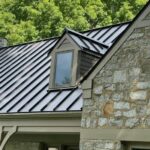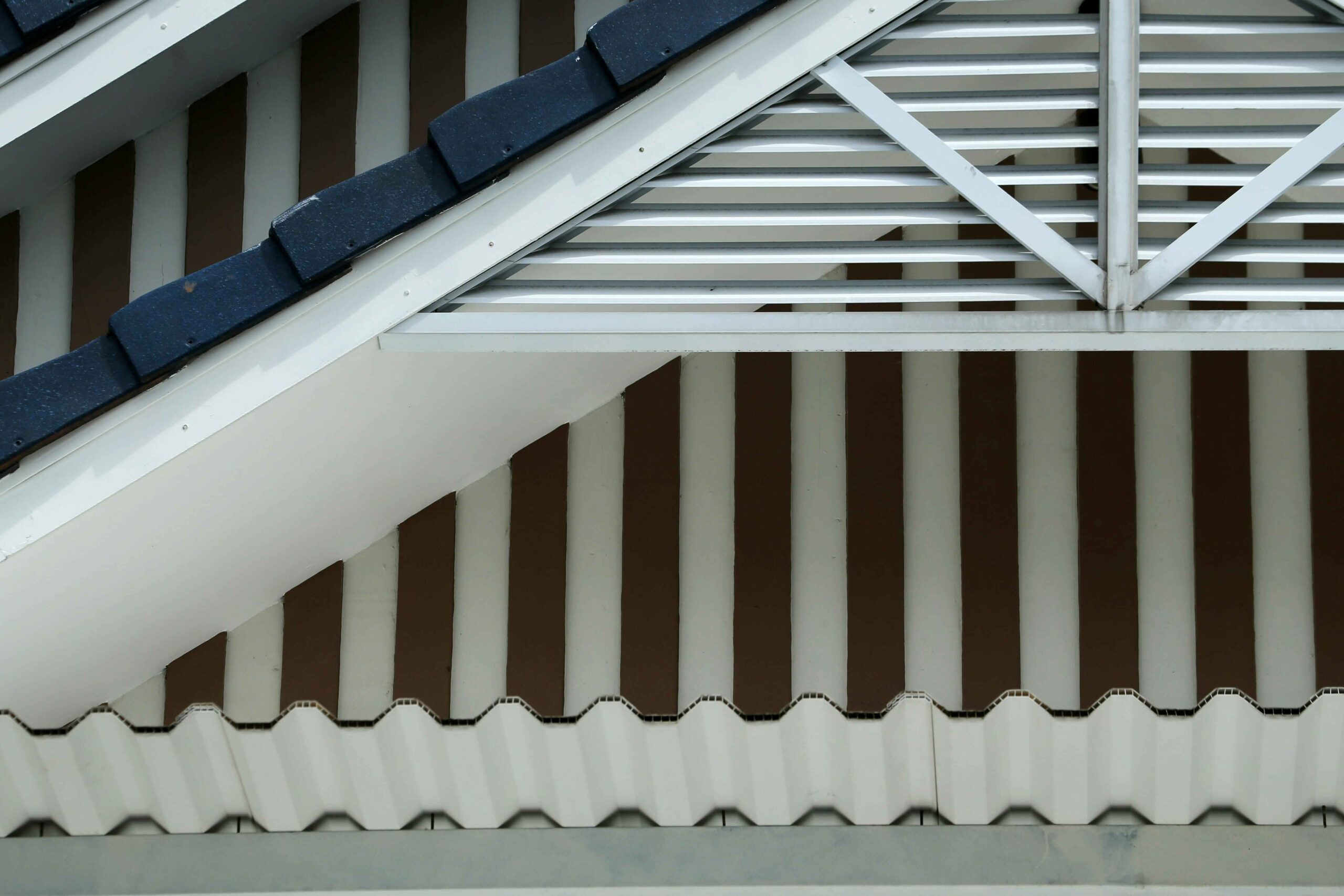Mother Nature: Protect Yourself, Your Home, and The Environment With A Metal Roofing System
March 14, 2014 | By Mike Gonet | Filed under: Articles, Education, General, Green News, Metal Roofing, Solar Energy
Advanced metal roofing technology that has sprung up over the last few decades includes reflective paints to increase energy efficiency, solar shingles that actually captures the sun’s energy and convert it into electrical energy, and metal roof components that interlock. Metal roofing on a home, in a way, can resemble a knight in armor … metal roofing provides armor both to the home as well as its occupants.
Storms have historically and continually caught many off-guard. On the summer morning of August 29, 2005, the Gulf Coast was struck with a category 3 hurricane. Winds blew between 100 and 140 mph, stretching up to 400 miles across. The impact from these winds infiltrated levees and caused severe flooding in many areas in Louisiana, Mississippi, and Alabama. This storm became known as “Hurricane Katrina.”
A Metal Roof is Like a Personal Suit of Armor
Whether or not your home is off the Gulf Coast, in Florida, Cape Cod, or any coastal area in New England, it is important to have a roof that can protect your home. You may not live in an area prone to hurricanes, but who knows if it eventually will be? Your home needs a personal suit of armor. Metal roofing is hurricane rated up to 120 mph. One of the reasons this system is so resistant to wind is because the panels interlock. Metal roofing is very light weight, and with the roofs ability to interlock to itself on all four sides, this system will withstand numerous environmental situations, such as: hurricane winds, heavy snow, and rain.
Interlocking Roofing Panels
 Though New England has not been hit with many hurricanes lately, who can predict when one will eventually have a significant impact in this area? Consider that anywhere with reasonably high winds or the possibility of any potential hurricane is present, you can benefit from a metal roof to protect your home from that potential impact. Know that if the roof suffers from a hurricane, your home will suffer too. This is not to be played off as something minor – in the worst case, a hurricane could completely destroy your home. It is smart to learn from your own mistakes, but it is even wiser to learn from others. You do not need to learn after your home is already destroyed. Look at the damages faced by the hurricanes in Louisiana and Florida, for example. Most of the roofs that remained throughout those storms were the ones with aluminum metal roofing with panels that interlock – these homes were protected by their own personal suit of armor.
Though New England has not been hit with many hurricanes lately, who can predict when one will eventually have a significant impact in this area? Consider that anywhere with reasonably high winds or the possibility of any potential hurricane is present, you can benefit from a metal roof to protect your home from that potential impact. Know that if the roof suffers from a hurricane, your home will suffer too. This is not to be played off as something minor – in the worst case, a hurricane could completely destroy your home. It is smart to learn from your own mistakes, but it is even wiser to learn from others. You do not need to learn after your home is already destroyed. Look at the damages faced by the hurricanes in Louisiana and Florida, for example. Most of the roofs that remained throughout those storms were the ones with aluminum metal roofing with panels that interlock – these homes were protected by their own personal suit of armor.
Environmental Friendliness
Metal roofing is the most environmentally friendly roofing option for most homes. Choosing aluminum over asphalt makes you a part of the solution, not the problem. Did you know that over 95% of the base metal for aluminum metal roofing is actually from recycled aluminum? Roughly 20 billion pounds of asphalt is dumped into US landfills every year. Unlike asphalt, this material is very advanced metal roofing technology. Metal roofing material does not use oil as its base resource. One may ask that if asphalt shingles need to be stripped anyway for the installation of metal roofing, aren’t we still contributing to the landfills? Wrong. As a matter of fact, in many situations, metal roofing can be installed over existing asphalt shingles without stripping them.
Reflective Capability
A metal roof will keep your house cooler in the summer and warmer in the winter. The reason is that metal roofing has radiant heat reflection, meaning the heat from the sun will reflect off of the roof, keeping the home cooler. Because of this, the excessive use of air conditioning during hot summer days will be drastically reduced. How does this affect the environment? The production of electricity used for air conditioning causes smog and pollution.
With a metal roof, you will not be producing as much electricity. However, the dead airspace between the metal roofing and roof deck provides great insulation. The metal gets hot, but the heat will not transfer into the house. In addition, your house will be able to retain heat much better during the winter. Most commonly, metal roofing with shinier metallic surfaces or milder colors are better at reflecting the radiant heat. Though, keep in mind that aluminum metal roofing will have natural emissivity, regardless. Special reflective paints, originally developed for military applications, have made great strides in increasing the reflectivity of metal roofs and is probably the most advanced metal roof technology to impact the market in recent years.
Besides the very environmentally friendly benefits of this roofing, metal roofing generally interfaces very nicely with solar panels. All of these benefits from a metal roof can actually fit into “cool roof” criteria, which means that in certain states, homeowners may be eligible for tax benefits. This said, here are a few frequently asked questions and misconceptions about metal roofing:
Isn’t metal roofing a new industry?
False. Although metal roofing seems to be gaining a lot of recent popularity, it has been widely used since the early 1800s. Even so, with many modern architects implementing metal roofing, homeowners figure their traditional home will not match with a metal roof. This, as well, is untrue. These products have become very advanced. Metal roofing comes in a variety of different styles and colors, such as the common “shake” style that mimics a wood shingle. Find out which metal roofing product suits your criteria.
Can’t Most Contractors Install a Metal Roof?
Absolutely not. In fact, you should steer clear from any roofing contractor that claims to install metal roofs but does not specialize in the field. Installing metal roofs is not an easy task. The craftsmanship is very specialized and advanced. Metal roofing requires many installation and bending techniques that only a specialized and experienced metal roofer exhibits. A common problem in this field is that many people receive an array of quotes for a metal roof, from a multitude of contractors and conclude by choosing the lowest price bidder. This usually leads to continual difficulties and problems due to a faulty installation which can ruin the promise of a “lifetime roof” with a plethora of repairs – often eventually adding up to the price that the reputable metal roofing contractor originally quoted, or more. In some cases, contractors have unknowingly installed agricultural metal roofing on homes, which later have had to be re-roofed with an architectural product. Save yourself the trouble; work with a reputable metal roofing contractor.
Metal roofing is too expensive!
It can be expensive, yes. But, like many investments, it will pay off. Along with the many environmental benefits and reducing your electric bills, a metal roof will increase the value of the home, and actually make the homeowner eligible for many tax benefits. Along with “cool roof” criteria in certain states, the wind and fire resistance of metal roofing, insurance companies will give discounts.
I live in a high wind area. Isn’t this a dangerous place for a metal roof?
As outlined earlier, the opposite is the case. There are many building codes that a roof must abide by in certain areas; hurricane regions in particular. Also, because the systems will generally interlock, metal roofing will be able to withstand high winds and prevent water from leaking in to the home. Remember, this roof is that of a suit of armor.
Metal roofing actually lasts long?
You will never have to re-roof again; because this industry has drastically advanced, metal roofing systems are expected to last up to 100 years. Because of the long term investment, the environmental benefits, and the incredibly specialized manufacturing and installation process, your roof will last you a lifetime.
Conclusion
Do yourself and Mother Nature a favor and get a metal roof. You will both protect the environment and protect yourself from the environment with this efficient shield of armor. Metal roofing has a come a long way, and you can make your home go a long way as well.





